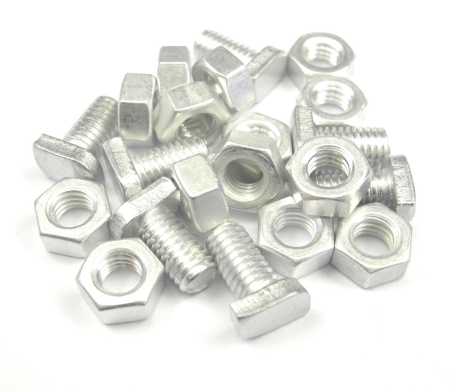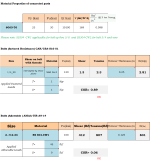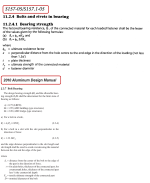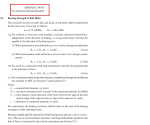Bolt check
Description
This sheet , check bolt under shear and tension forces according to CAN/CSA S16-01 and AMAA-TIR-A9-14.Moreover, check bearing capacity for connected parts (for Aluminum and steel) as well.
Calculation Reference
Bolt Strength
Steel Bolts
Aluminium Bolts
To check the bolt under shear and tension forces according to CAN/CSA S16-01 (Canadian standard for steel structures) and AMAA-TIR-A9-14 (Aluminum Design Manual), as well as to check the bearing capacity for connected parts (for aluminum and steel), a detailed analysis is required. The specific calculations and procedures depend on factors such as the type of bolt, connection type, material properties, and design parameters. A general outline of the steps involved in the analysis:
- Determine the applied loads: Identify the shear and tension forces acting on the bolted connection. Ensure that you have accurate values for these loads.
- Determine the bolt size and grade: Specify the bolt size (diameter and length) and the grade of the bolt material. The bolt grade determines its strength properties.
- Calculate the required bolt capacity: Calculate the required bolt capacity based on the applied loads. For tension, ensure that the bolt's tensile strength is sufficient. For shear, verify that the bolt's shear strength meets the requirements.
- Check bolt capacity: Compare the required bolt capacity to the actual bolt capacity. The actual capacity depends on the bolt material properties, diameter, and length. Ensure that the actual capacity is equal to or exceeds the required capacity.
- Check bearing capacity: For the connected parts, such as steel plates or aluminum members, calculate the bearing capacity. The bearing capacity is the ability of the connected parts to withstand the applied loads without crushing or failure at the contact surfaces. The specific calculations depend on the connection type and material properties.
- Compare bearing capacity to applied loads: Compare the calculated bearing capacity to the applied loads on the connected parts. Ensure that the bearing capacity is greater than or equal to the applied loads to prevent failure.
It's important to note that the detailed calculations for bolt and bearing capacity analysis involve numerous variables and considerations, including specific design provisions, safety factors, and material properties.
Calculation Preview
Full download access to any calculation is available to users with a paid or awarded subscription (XLC Pro).
Subscriptions are free to contributors to the site, alternatively they can be purchased.
Click here for information on subscriptions.




